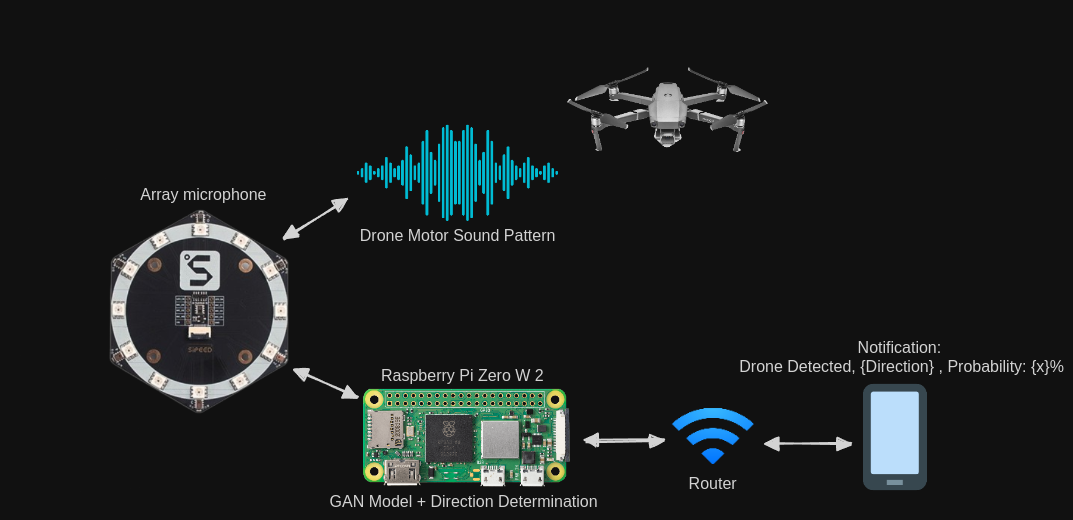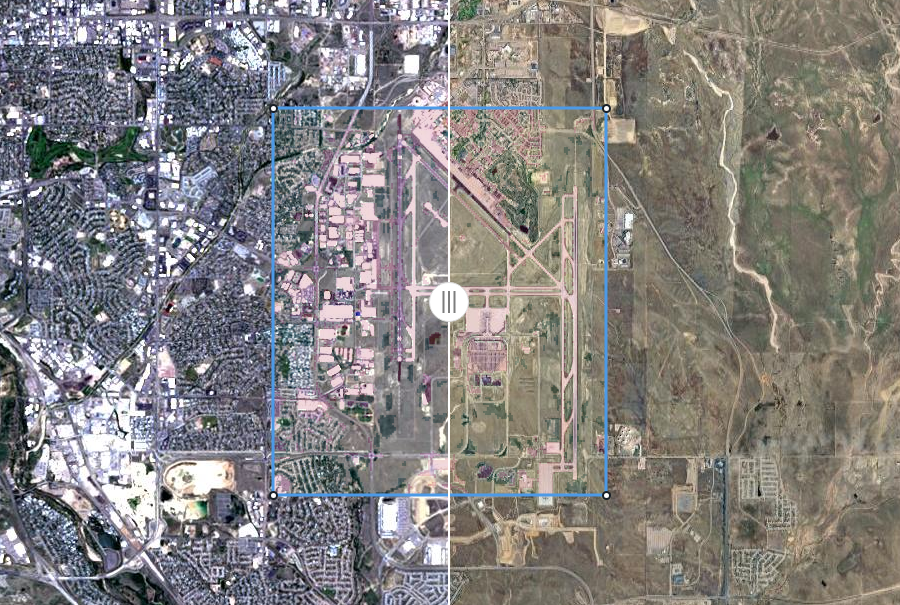· Drone Detection · 3 min read
Exploring Acoustic Drone Detection
Acoustic drone detection leverages sound analysis to identify and track drones using advanced machine learning and audio analysis techniques.

This post contains my notes and experiences exploring acoustic drone detection using different methods. My focus is to develop a lightweight version of the system that can run on a Raspberry Pi Zero W 2.
Acoustic Drone Detection
What is Acoustic Drone Detection?
Drone motors have a distinct sound pattern that is usually easy to detect using acoustic drone detection methods, which involve the use of sound analysis to identify and track drones. This is accomplished by using an array of microphones to determine direction. By capturing and analyzing the unique acoustic signatures generated by drone motors and propellers, detection systems can effectively monitor drone activity.
In today’s world, I believe it’s important for everyone to have a device capable of detecting drones hovering around their property. Whether drones are conducting illegal surveillance or have malicious intent, knowing that a drone flew around your property could help you make the necessary decisions to protect your property and report the drone.
Exploring Different Means of Drone Detection
Microphones and Arrays
Using sensitive microphones and microphone arrays, acoustic systems can triangulate the position of a drone based on the sound it emits. This method relies on capturing the distinct sound frequencies produced by drones.

Advanced signal processing techniques, such as spectral analysis and filtering, are used to isolate drone sounds from background noise. This enhances the accuracy of detection systems.
One of the methods I am exploring involves training machine learning models to recognize and classify drone sounds from various environments. This involves collecting a large dataset of acoustic signatures from different drone types and training the model to identify them.
Developing a Machine Learning Model for Drone Detection
Generative Adversarial Networks
“GANs are a clever way of training a generative model by framing the problem as a supervised learning problem with two sub-models: the generator model, which we train to generate new examples, and the discriminator model, which tries to classify examples as either real (from the domain) or fake (generated). The two models are trained together in a zero-sum game, adversarial, until the discriminator model is fooled about half the time, meaning the generator model is generating plausible examples.” - Jason Brownlee, machinelearningmastery.com
I found this research: https://www.ncbi.nlm.nih.gov/pmc/articles/PMC8348319/
It provided a starting point for using a Generative Adversarial Network (GAN) to create an acoustic drone detection model. I fetched this dataset: https://github.com/DroneDetectionThesis/Drone-detection-dataset/tree/master/Data/Audio. Ideally, I would also record some of my own audio samples, but for now, this dataset will work just fine.
Hardware Requirements
- Microphones: High-sensitivity microphones capable of capturing a wide range of frequencies.
- Microcontroller/Single-board Computer: A Raspberry Pi Zero W 2 for deploying lightweight detection models.
- Audio Interface: An audio interface or sound card to connect microphones to the processing unit.
Software Setup
- Signal Processing Libraries: Libraries such as SciPy and NumPy for initial sound processing.
- Machine Learning Frameworks: TensorFlow or PyTorch for deploying trained models.
- Custom Software: Tailored code to integrate hardware and software components, specific to acoustic drone detection.
Implementing and Testing the System
I am still working on finding the time to conduct comprehensive tests. When I do, I will update this post.
